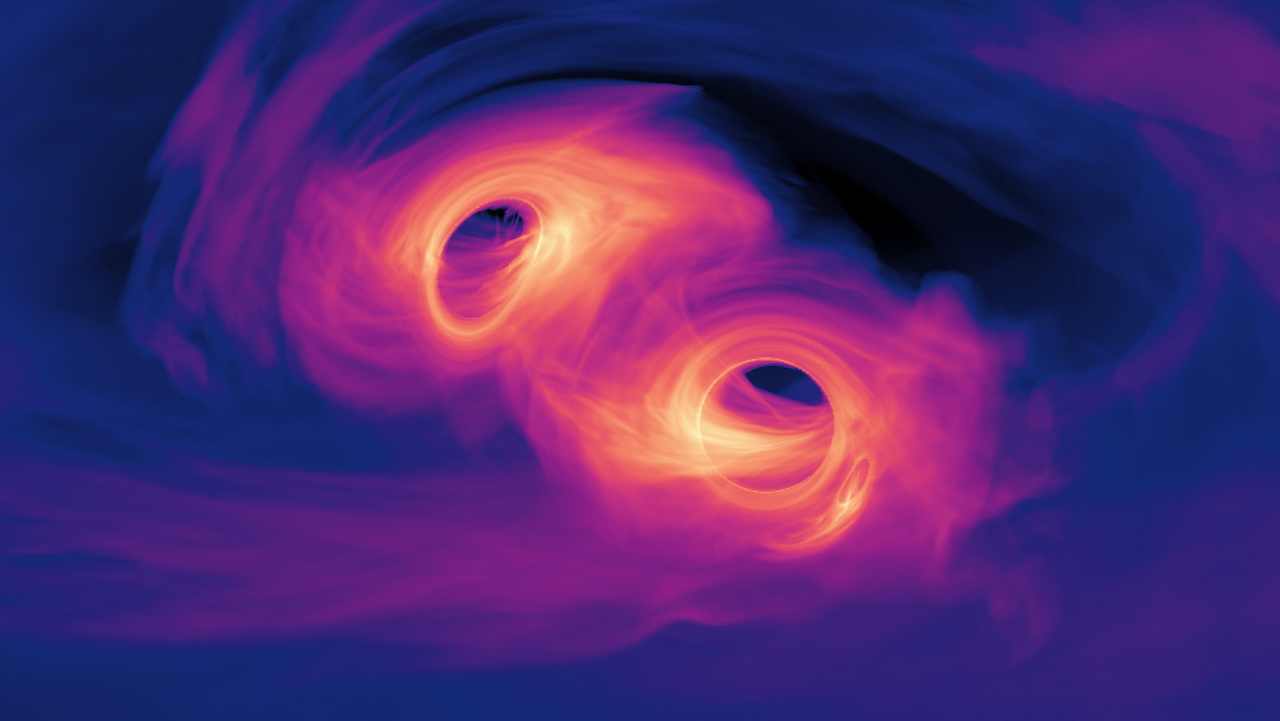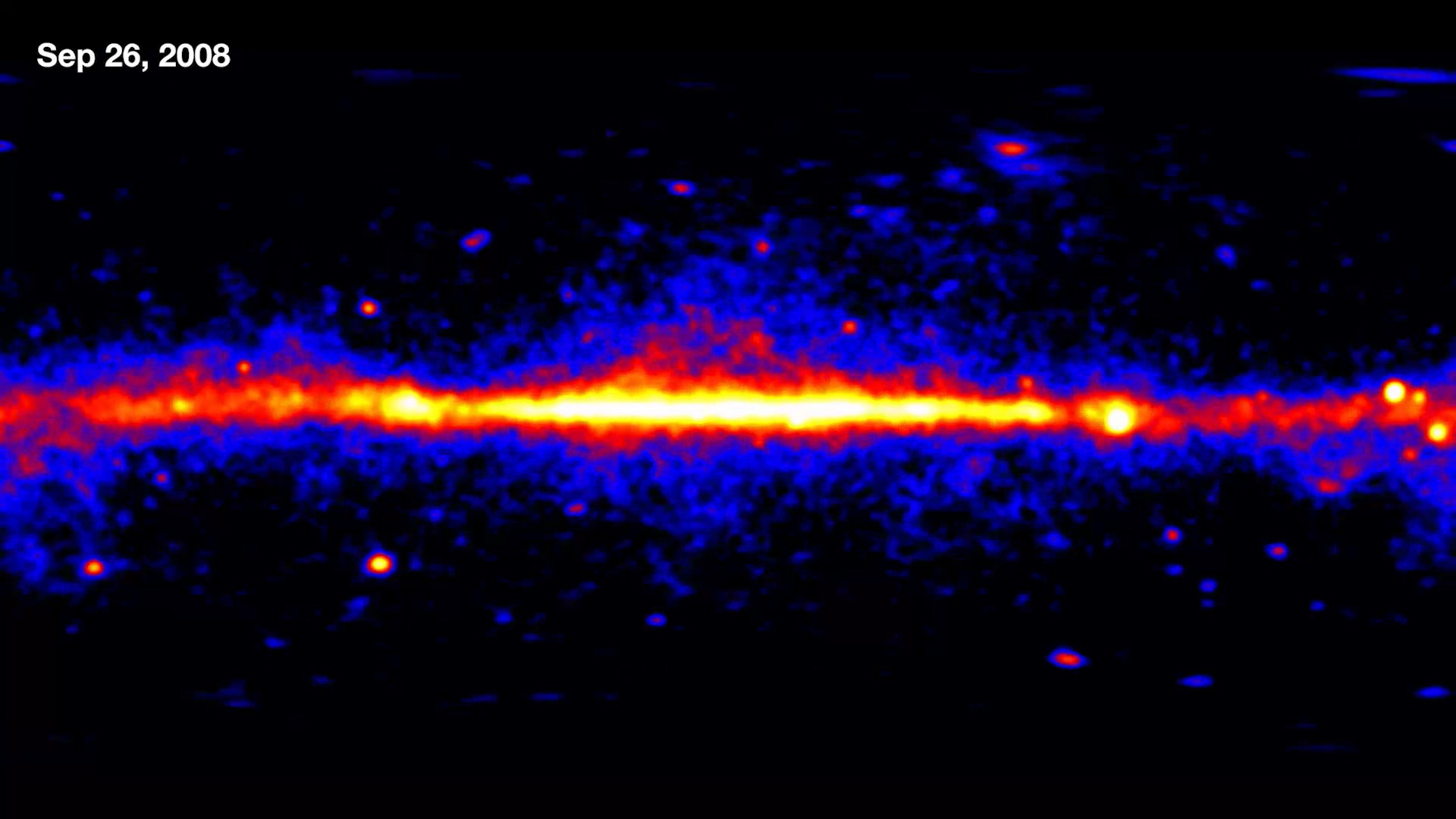Nestled on the slopes of Cerro La Negra at an elevation of 13,000 feet is an unusual-looking observatory. Known as the High-Altitude Water Cherenkov (HAWC) observatory, it looks like a tightly packed collection of grain silos, which is essentially what it is. But rather than holding grain, the silos are each filled with 188,000 liters of water and four photomultiplier tubes. While it’s an unusual setup, it’s what you need to observe high-energy gamma rays from deep space.
Continue reading “There's a Particle Accelerator at the Center of the Milky Way”Merging Black Holes Could Give Astronomers a Way to Detect Hawking Radiation

Nothing lasts forever, including black holes. Over immensely long periods of time, they evaporate, as will other large objects in the Universe. This is because of Hawking Radiation, named after Stephen Hawking, who developed the idea in the 1970s.
The problem is Hawking Radiation has never been reliably observed.
Continue reading “Merging Black Holes Could Give Astronomers a Way to Detect Hawking Radiation”Watch 14 Years of Gamma-Ray Observations in This Fascinating NASA Video

The Fermi Gamma-ray Space Telescope, named in honor of noted physicist Enrico Fermi, has been in operation for almost a decade and a half, monitoring the cosmos for gamma rays. As the highest-energy form of light, these rays are produced by extremely energetic phenomena – like supernovae, neutron stars, quasars, and gamma-ray bursts (GRBs). In honor of this observatory’s long history, NASA’s Goddard Spaceflight Center has released a time-lapse movie that shows data acquired by the Fermi Space Telescope between August 2008 and August 2022.
Continue reading “Watch 14 Years of Gamma-Ray Observations in This Fascinating NASA Video”Fermi has Found More than 300 Gamma-Ray Pulsars

In June 2008, the Gamma-ray Large Area Space Telescope began surveying the cosmos to study some of the most energetic phenomena in the Universe. Shortly after that, NASA renamed the observatory in the Fermi Gamma-ray Space Telescope in honor of Professor Enrico Fermi (1901-1954), a pioneer in high-energy physics. During its mission, Fermi has addressed questions regarding some of the most mysterious and energetic phenomena in the Universe – like gamma-ray bursts (GRBs), cosmic rays, and extremely dense stellar remnants like pulsars.
Since it began operations, Fermi has discovered more than 300 gamma-ray pulsars, which have provided new insights into the life cycle of stars, our galaxy, and the nature of the Universe. This week, a new catalog compiled by an international team contains the more than 300 pulsars discovered by the Fermi mission – which includes 294 confirmed gamma-ray-emitting pulsars and another 34 candidates awaiting confirmation. This is 27 times the number of pulsars known to astronomers before the Fermi mission launched in 2008.
Continue reading “Fermi has Found More than 300 Gamma-Ray Pulsars”The Universe Sparkles in Gamma Rays in this New NASA Animation

We’ve come a long way since gamma rays were discovered.
The late 1800s and early 1900s were a time of great scientific advancements. Scientists were just getting a handle on the different types of radiation. Radium featured prominently in the experiments, including one by French scientist Paul Ulrich Villard in 1900.
Radium decays readily, and scientists had already identified alpha and beta radiation coming from radium samples. But Villard was able to identify a third type of penetrating radiation so powerful even a layer of lead couldn’t stop it: gamma rays.
Now we have a gamma ray detector in space, and it’s showing us how the Universe sparkles with this powerful energy.
Continue reading “The Universe Sparkles in Gamma Rays in this New NASA Animation”
